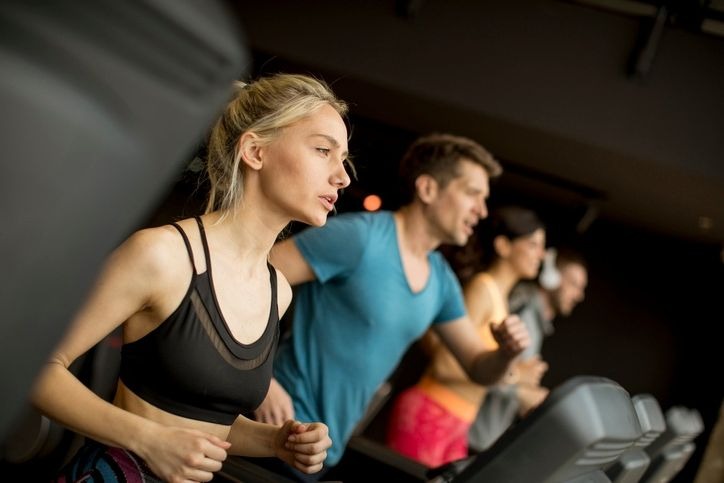Why do we breathe faster during an effort?
Caution : You must consult your doctor for your health. This page presents only a personal and alternative point of view which should not be considered as an attempt to prescribe medicine.
Breathing is essential for the body to function.
It is this that makes it possible to draw oxygen from the atmosphere.
It also helps remove carbon dioxide that forms during energy production.

During physical activity, we notice an adaptation of the respiratory system to provide the necessary oxygen.
This therefore implies an acceleration of breathing.
Find out the reasons for this phenomenon.
How the lungs work
You may not have known it, but the lungs are not the source of breathing.
Rather, it is the diaphragm that helps the lungs fill with air.
These two organs are connected by the pleura.
In fact, during full inspiration, the intercostal muscles which are located more precisely between the two ribs, as they rise, cause the volume of the rib cage to increase (chest breathing).
But long before, it is the diaphragm which is located between the lung and the abdomen that lowers, and promotes the increase in the size of the lungs.
When exhaling, the reverse occurs.
As a result, the rib cage and belly are seen to lower as the diaphragm rises.
Then, the air is expelled due to the retraction of the lungs which have great elasticity.
Why does breathing speed up during physical exertion?
While we are exerting an effort, the work of the lungs becomes more dense.
This is done in order to provide all the oxygen the body needs and to eliminate carbon dioxide from the lungs.
It should be noted that breathing is a succession of respiratory movements with each inhalation and exhalation.
If a person is physically active, more air is circulating in their lungs.
The heart beats faster in order to propel the blood more strongly in the body overall.
Short-term adaptation of the lungs during exertion
During physical activity, for example, areas of the brain that exert control over breathing experience stimulation due to many factors such as:
- information from receptors located in parts such as tendons and muscles;
- the increase in the concentration of carbon dioxide in our blood as well as the decrease in the concentration of oxygen;
- and the increase in adrenaline levels during intense activity.
The frequency of breathing is therefore accelerated under the impetus of these information mechanisms.
In this setting, there is a stronger contraction of the intercostal muscles and the diaphragm.
This increases the volume of the rib cage and stomach during inspiration.
In addition, there is therefore a slight increase in the amount of air ventilated by the lungs when you start exercising.
Then, the pace accelerates significantly during the activity.
It takes time to achieve a certain balance.
This is what sometimes causes discomfort, such as a sidelight for example.
In order to draw more oxygen and expel carbon dioxide, it is necessary to increase the volume of ventilated air rather than increasing the frequency of breathing.
However, many beginners make the mistake of increasing the rate of ventilation without breathing in and out using the diaphragm.
They often make the mistake of only using chest breathing, which is a big mistake.
In this way, they feel the lack of oxygen quite quickly.
Long-term adaptation of the lungs during exertion
In general, those who participate in endurance sports on a regular basis strive to increase the volume of inspired air rather than increasing the ventilation rate.
In other words, they try to fill their lungs better rather than breathe faster and shallowly.
In this way, they improve the supply of oxygen which requires less energy.
The importance of warming up and cooling the respiratory system
Like the cardiovascular system, warming up is very important.
It allows our respiratory system to gradually achieve optimal functioning.
Warming up thus gradually increases the volume of air that the individual breathes in to achieve balance.
As for recovery, it is essential in replenishing the energy reserves that the body consumes during exercise.
It should be noted that this reconstitution made possible by the recovery is proportional to the amount of oxygen that was lacking during physical exertion.
It's called: the oxygen debt.
Therefore, warming up well at the beginning of the exercise helps to limit the oxygen debt.
In conclusion, it must be said that the acceleration of breathing during physical exertion is mainly due to the fact that the respiratory system adapts.
The lungs work harder to supply the necessary amount of oxygen and at the same time remove carbon dioxide.
It is therefore a fairly normal phenomenon for a person who exerts himself.
The most important thing will be to keep diaphragmatic breathing and nasal breathing for athletes who want to avoid stress.
❤ The ultimate guide to breathing
Intermittent Breathing : Discover the method to quickly relieve your anxiety and chronic fatigue (positive effects from the first use).Read also :
Previous article : Why do we breathe harder at night?
Next article : Anxiety attack and breathing problem: what to do?

